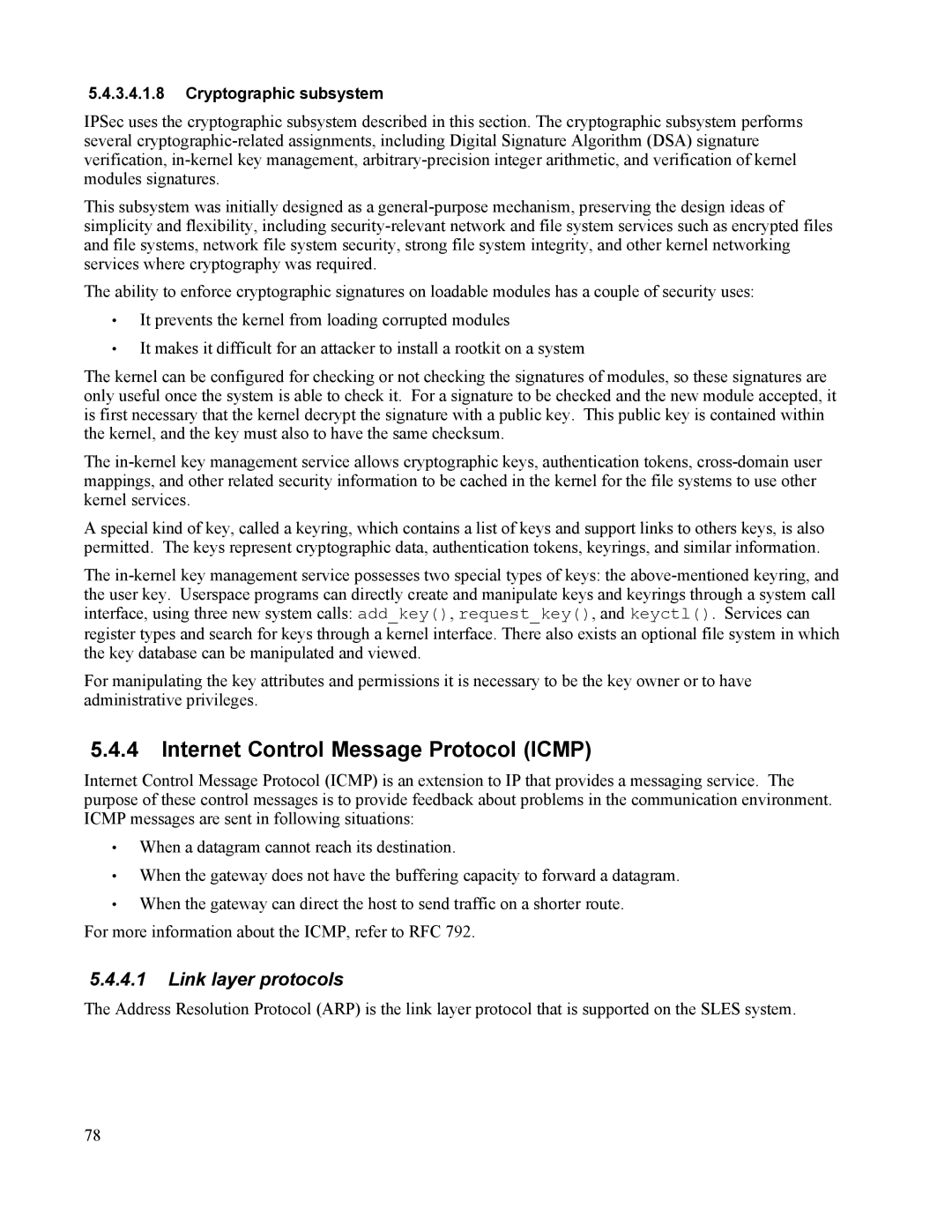5.4.3.4.1.8Cryptographic subsystem
IPSec uses the cryptographic subsystem described in this section. The cryptographic subsystem performs several
This subsystem was initially designed as a
The ability to enforce cryptographic signatures on loadable modules has a couple of security uses:
•It prevents the kernel from loading corrupted modules
•It makes it difficult for an attacker to install a rootkit on a system
The kernel can be configured for checking or not checking the signatures of modules, so these signatures are only useful once the system is able to check it. For a signature to be checked and the new module accepted, it is first necessary that the kernel decrypt the signature with a public key. This public key is contained within the kernel, and the key must also to have the same checksum.
The
A special kind of key, called a keyring, which contains a list of keys and support links to others keys, is also permitted. The keys represent cryptographic data, authentication tokens, keyrings, and similar information.
The
For manipulating the key attributes and permissions it is necessary to be the key owner or to have administrative privileges.
5.4.4Internet Control Message Protocol (ICMP)
Internet Control Message Protocol (ICMP) is an extension to IP that provides a messaging service. The purpose of these control messages is to provide feedback about problems in the communication environment. ICMP messages are sent in following situations:
•When a datagram cannot reach its destination.
•When the gateway does not have the buffering capacity to forward a datagram.
•When the gateway can direct the host to send traffic on a shorter route.
For more information about the ICMP, refer to RFC 792.
5.4.4.1Link layer protocols
The Address Resolution Protocol (ARP) is the link layer protocol that is supported on the SLES system.
78
